Organizing Accounts Payable: 10 Best Practices
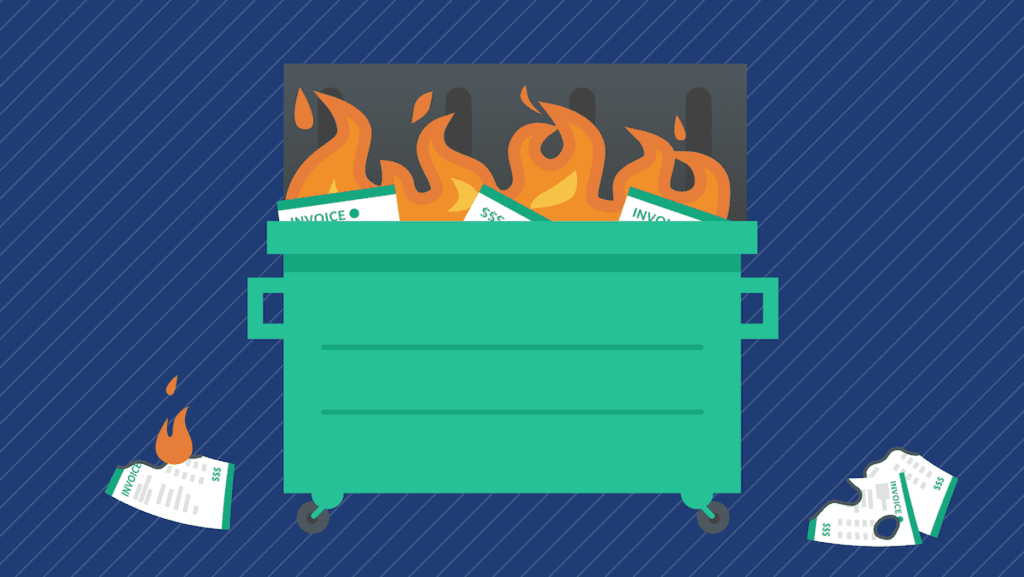
Accounts payable is a vital function in every business. Making sure that invoices are paid promptly and accurately—and that the AP process is organized—is crucial to maintaining good business relationships with vendors, ensuring good cash flow, and preventing costly errors and even fraud.
Keep reading for 10 best practices you can implement to organize your accounts payable.
How to Organize Your Accounts Payable
When your accounts payable process is disorganized, you can run into serious cash flow problems, soured vendor relationships, expensive errors and fraud, and even delays that translate into unhappy customers. Aside from all that, it makes for a very stressful job for your AP staff.
On the other hand, when accounts payable runs smoothly, invoices are paid on time, there’s a clear view of money in vs. money out, which empowers business leaders to plan, manage cash flow more effectively, and make informed decisions. Plus, an organized AP department makes for a much less stressful tax and audit season.
Moreover, when you have good oversight of the due invoices, your business can benefit from early business-to-business (B2B) payment discounts offered by many suppliers (such as 2% off if you pay within ten days).
That’s why we’ve rounded up 10 best practices to help you organize your accounts payable.
1. Audit Your Current Processes and Assess Your AP Needs
The first step to organizing your AP department is taking stock of where things currently stand. Take a hard look at how your accounts payable processes currently work and identify problem areas that can be improved.
Ask yourself the following questions:
- How many invoices does your business currently handle per month, on average?
- How many people are involved in your accounts payable workflows?
- Are your AP processes working for your business at its current size?
- Will your current system be sufficient if your business continues to grow?
- In which format(s) are you receiving these invoices? (Email? Paper? Fax? Do you have accounting software that pulls them in automatically?)
- How frequently do you pay invoices late?
- Do invoices ever go missing?
- Do you ever discover duplicate payments for the same invoices?
- What checks and balances do you have in place to prevent these types of errors?
- Do you have established procurement policies and approval protocols?
- Do your invoices typically align with your purchase requisitions and purchase orders?
- Do you struggle with approval backlogs and/or bottlenecks?
- How do you process payments? (Credit cards? ACH? Checks?)
- Do you have clear oversight of cash flow and monthly expenditure?
- Do you currently take advantage of early payment discounts?
- Do you have good relationships with your suppliers?
Assessing the state of your AP system will help you to understand your needs and make it easier to implement solutions that empower your AP department to be as efficient and accurate as possible.
(For a free complete AP Automation Checklist to help with your audit, click here)
2. Standardize Your Procurement Processes
What are your current procurement processes? If you or your team can’t answer in (near) unison, then you may have work to do. When you don’t have clear policies governing purchases, it’s a lot more difficult to control cash flow and prevent fraud. Everyone in your company should be familiar with the rules around who is allowed to initiate and authorize purchases, orders, and service level agreements. This way, you won’t receive surprise invoices and expense claims resulting from employees making purchases they had no business making.
3. Communicate With Your Vendors
Building good relationships and open channels of communication with your suppliers is crucial to establishing an AP department that runs like a well-oiled machine. In addition to increasing the chances that you’ll get good deals and discounts, being on good terms with your vendors makes it much easier to check for errors and resolve any issues that may arise.
You’re also much less likely to fall prey to invoice fraud if you thoroughly onboard each supplier and keep accurate and up-to-date records of their contact and payment information, and clearly communicate which specific information they need to include in their invoices.
Using AP automation software with features like Stampli’s collaboration hub can make this process much easier by allowing you to communicate with vendors within the context of the invoice.
4. Introduce Approval Workflows
Take the time to create rules around what kinds of purchases and expenses are permitted and which level managers are allowed to sign off on them. It’s also a good idea to establish cost thresholds that require authorization from higher up, for instance from the CFO or Director.
To further prevent unauthorized purchases and prevent fraud, you might consider centralizing all payments to a single person or department—or even using AP software with stringent role-based permissions control and login tracking.
5. Batch Invoice Payments
While it’s a good idea to capture invoices in small batches as they arrive instead of tackling them all once or twice a month, batching payments together in larger batches can save a lot of time and mental energy compared to processing dozens of separate payments throughout the month.
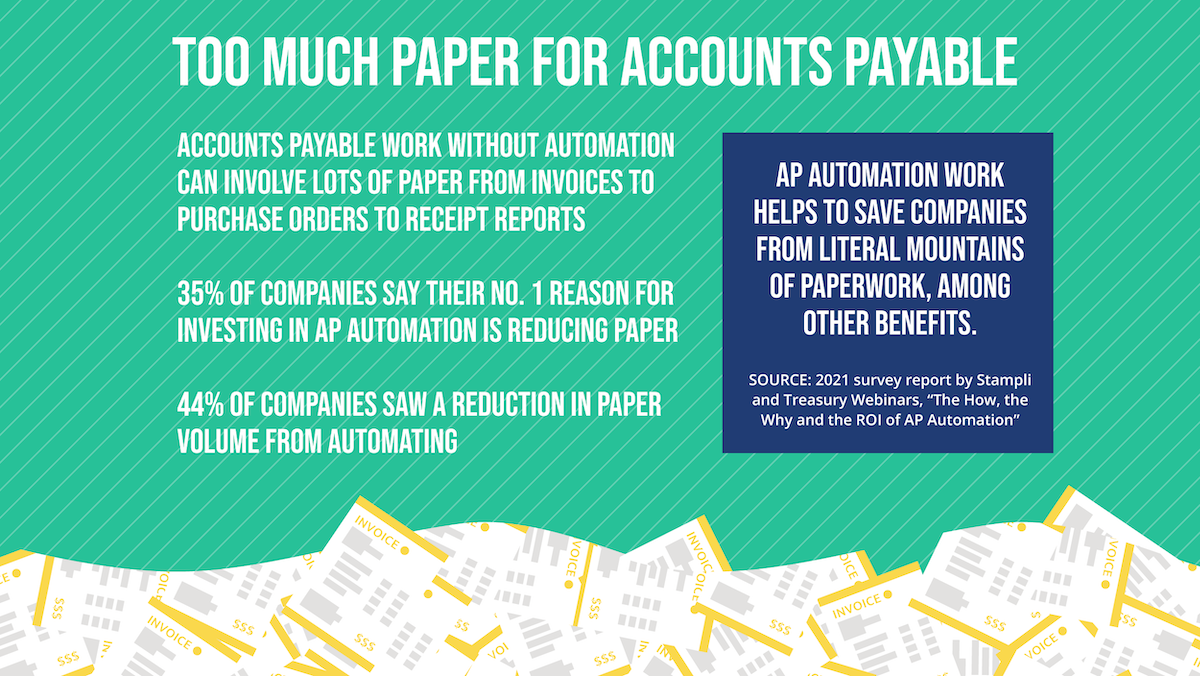
6. Go Paperless by Digitizing Your AP Processes
Paper-based invoice processing and filing systems can become an administrative nightmare if your bookkeeping and filing systems aren’t meticulous. Even then, paper has major downsides, including missing documents, errors resulting from manual data entry, and the need for physical storage space—not to mention not being very eco-friendly.
Tiny businesses might be able to manage their accounts payable with paper invoice management systems and Excel spreadsheets, but growing businesses that receive multiple bills every day should seriously consider digitizing their AP process by investing in accounting software. Forget about scanning paper invoices—Modern accounts payable software equipped with optical character recognition (OCR) can automatically extract information from PDF invoices as soon as they hit your inbox.
AP automation software offers a range of other benefits that we’ll get into in more detail below.
7. Keep Vendors in the Loop with a Self-Service Portal
A user-friendly self-service portal like Stampli’s Vendor Portal empowers suppliers to update information like their contact information and payment details, and check the status of their invoices.
Vendors can also submit inquiries and receive responses from your AP department concerning individual invoices, making for faster and more detailed responses than endless emails and phone calls, especially given that the invoice in question is attached to the inquiry thread at all times.
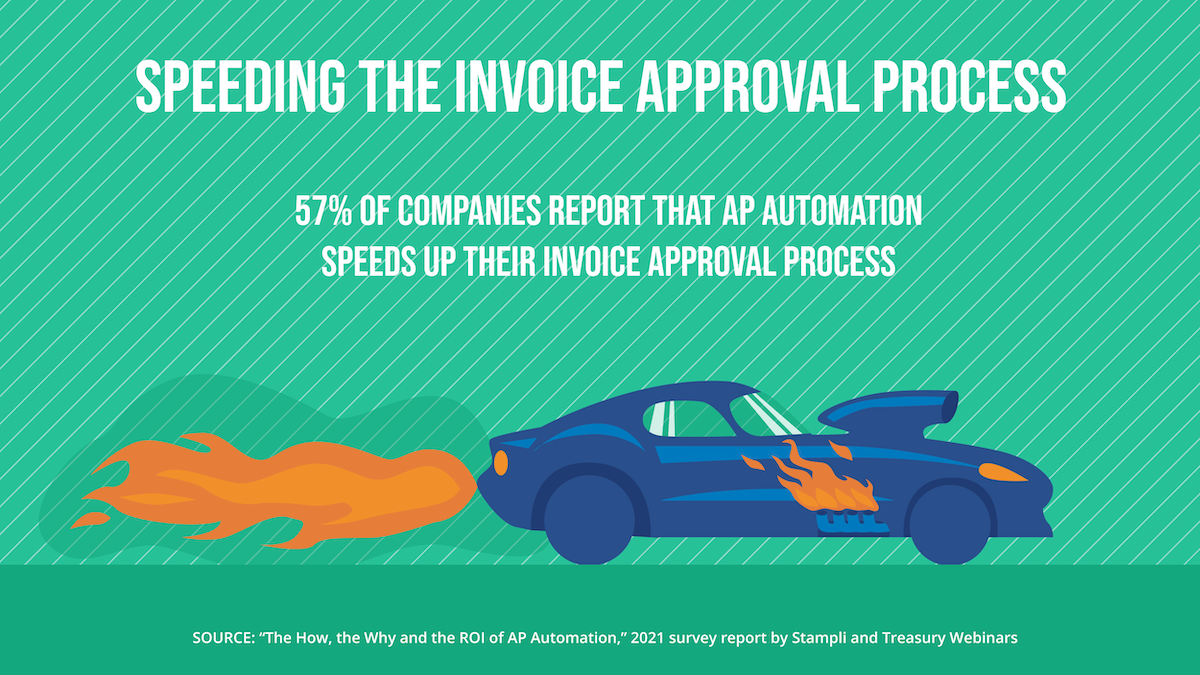
8. Automate Repetitive Actions to Improve Efficiency
With AP automation, you can say goodbye to error-prone, mind-numbing manual data entry. Free up your accounts payable staff to spend more time and energy on strategic tasks like managing cash flow, finding discounts, vetting vendors, and building relationships.
Automating your AP workflows means you don’t need to chase down managers to sign off on invoices or chase down employees for not submitting purchase requisitions for approval from the relevant overseer.
That’s because any AP automation software worth its salt will offer logic that can automatically route documents for approval to the correct party when the right conditions are met. For instance, if a purchase order that exceeds $10,000 comes in, it will automatically land up in the Director’s inbox—if you have configured such a rule.
What’s more, automation comes with automated reminders, nudging people into completing their task in the workflow so your AP staff doesn’t have to, dissolving bottlenecks.
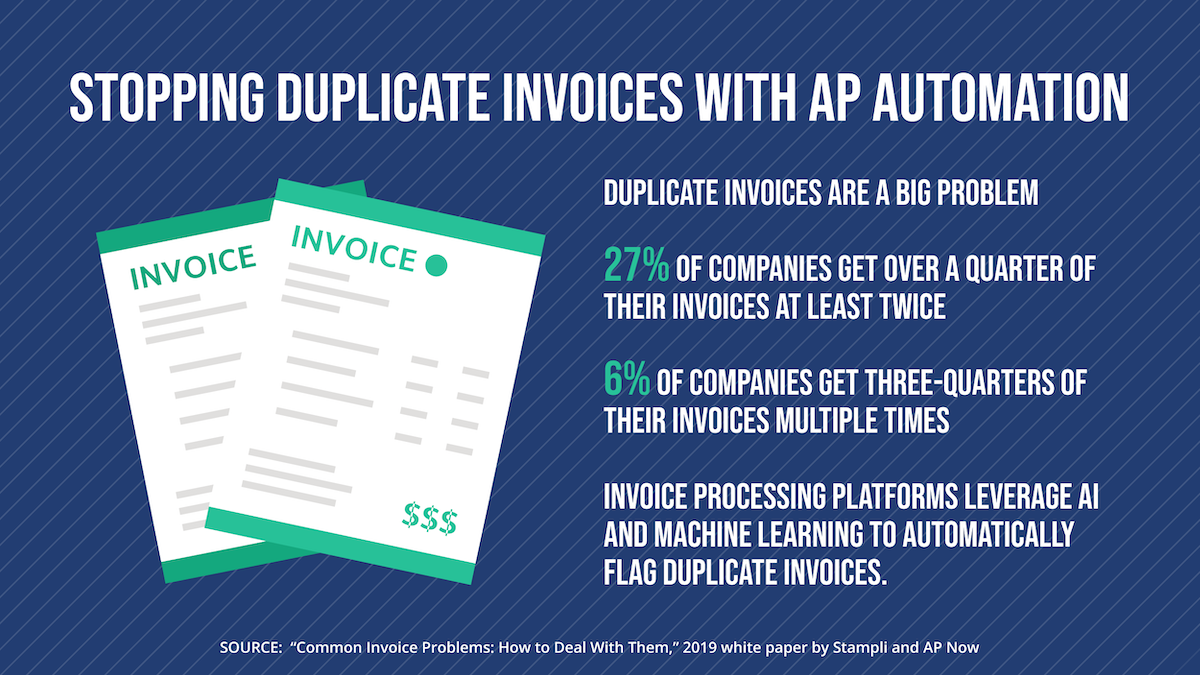
2. Use Artificial Intelligence to Prevent Errors and Fraud
If you haven’t used it before, artificial intelligence (AI) might seem like an overly complicated or intimidating thing. The truth is, accounting software equipped with AI can make your job a whole lot easier. In this case, as in many others, AI is not here to take your job—it’s here to make you better at it. And, with machine learning capabilities, it learns your processes and gets better at it the more you use it.
In the context of AP automation, AI like Stampli’s user-friendly bot, Billy, can do things like capture invoice data in real-time, code your invoices appropriately, and route them to the right people for approval. It also catches errors like duplicate invoices, performs calculations, and takes care of three-way matching for you. Billy also takes care of reminding stakeholders to complete their steps of the invoice process.
AI can do this much more efficiently and accurately than humans (especially tired humans whose eyes and fingers play tricks on them), which means that costly errors and fraud attempts are much less likely to slip through.
10. Set Up Reports for Greater Visibility
If you’re reading this blog about organizing your accounts payable, the odds are it’s time to level up your AP reporting.
Accounts payable reports and dashboards make staying on top of your cash flow a breeze. These reports can give you a consolidated overview of how and when each vendor is paid, allow you to conduct vendor analysis, as well as run analyses for internal reviews such as spend by department or by project.
Most leading AP automation software includes robust reporting capabilities and a selection of preconfigured reports as well as the option to set up customized reporting according to your needs.
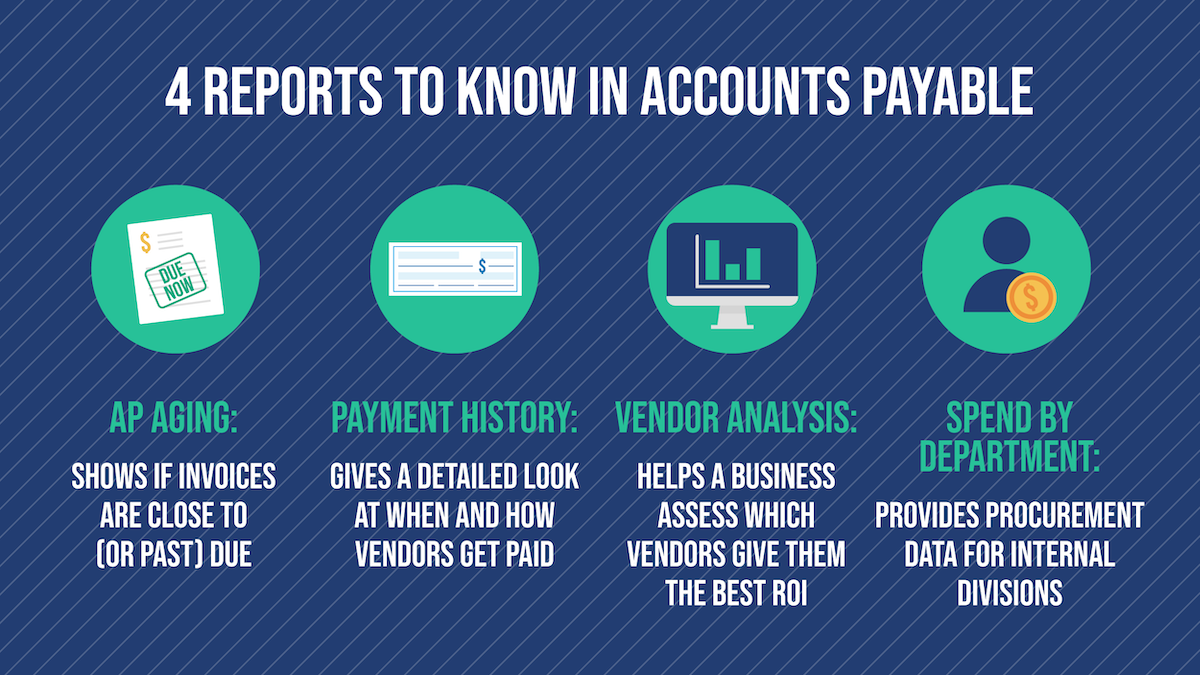
Why You Should Invest in AP Automation Software
Instead of giving you a long-winded sales pitch, we’ll sum up the benefits of AP automation for organizing accounts payable in three short bullets below:
- AP automation streamlines your entire invoice-to-pay process by digitizing and automating it, freeing up your financial team to focus on making strategic decisions that increase your profits and improve your cash flow.
- AI and machine learning do the time-consuming stuff like data entry, approval routing and follow-up, duplicate detection, and three-way matching.
- With powerful data reporting tools, you can get actionable insights in a user-friendly visual format, giving you the information you need to make informed decisions at a glance.
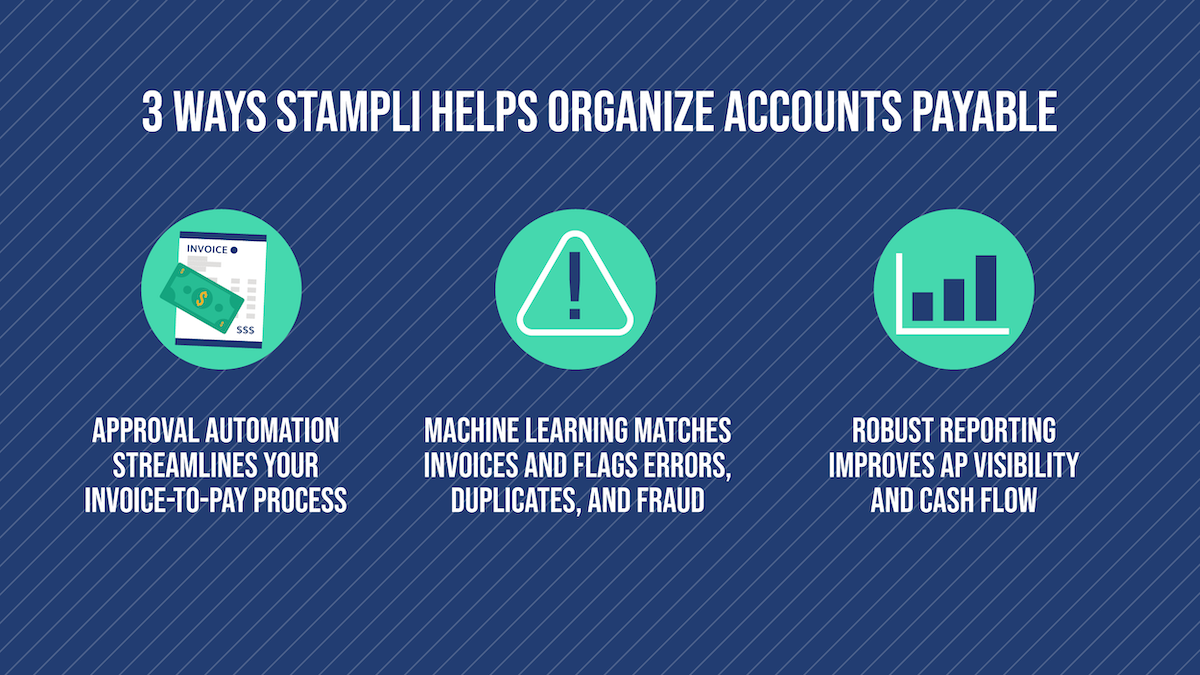
Sounds like a good idea to us. But don’t take our word for it—schedule a free demo today and see Stampli in action for yourself.
Did you know? You can try out Stampli on a month-to-month basis and if it doesn’t change your life for the better (it will), you’re free to go back to doing things the old way.